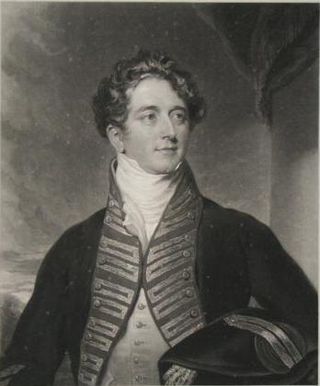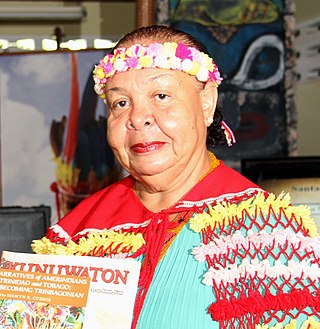The history of Trinidad and Tobago begins with the settlements of the islands by Indigenous First Peoples. Trinidad was visited by Christopher Columbus on his third voyage in 1498,, and claimed in the name of Spain. Trinidad was administered by Spanish hands until 1797, but it was largely settled by French colonists. Tobago changed hands between the British, French, Dutch, and Courlanders, but eventually ended up in British hands following the second Treaty of Paris (1814). In 1889, the two islands were incorporated into a single political entity. Trinidad and Tobago obtained its independence from the British Empire in 1962 and became a republic in 1976.

This article is about the demography of the population of Trinidad and Tobago including population density, ethnicity, education level, health of the populace, economic status, religious affiliations and other aspects of the population.

Port of Spain, officially the City of Port of Spain, is the capital of Trinidad and Tobago and the third largest municipality, after Chaguanas and San Fernando. The city has a municipal population of 37,074 (2011), an urban population of 81,142 and a transient daily population of 250,000. It is located on the Gulf of Paria, on the northwest coast of the island of Trinidad and is part of a larger conurbation stretching from Chaguaramas in the west to Arima in the east with an estimated population of 600,000.

The Kalinago, formerly known as Island Caribs or simply Caribs, are an Indigenous people of the Lesser Antilles in the Caribbean. They may have been related to the Mainland Caribs (Kalina) of South America, but they spoke an unrelated language known as Island Carib. They also spoke a pidgin language associated with the Mainland Caribs.

Rose of Lima, TOSD was a member of the Third Order of Saint Dominic in Lima, Peru, who became known for both her life of severe penance and her care of the poverty stricken of the city through her own private efforts. Rose of Lima was born to a noble family and is the patron saint of embroidery, gardening and cultivation of blooming flowers. A lay member of the Dominican Order, she was declared a saint by the Catholic Church, being the first person born in the Americas to be canonized as such.

Trinidad is the larger and more populous of the two major islands of Trinidad and Tobago. The island lies 11 km (6.8 mi) off the northeastern coast of Venezuela and sits on the continental shelf of South America. It is often referred to as the southernmost island in the West Indies. With an area of 4,768 km2 (1,841 sq mi), it is also the fifth largest in the West Indies.

Arima, officially The Royal Chartered Borough of Arima is the easternmost and second largest in area of the three boroughs of Trinidad and Tobago. It is geographically adjacent to Sangre Grande and Arouca at the south central foothills of the Northern Range. To the south is the Caroni–Arena Dam. Coterminous with Town of Arima since 1888, the borough of Arima is the fourth-largest municipality in population in the country. The census estimated it had 33,606 residents in 2011.
The Santa Rosa First Peoples Community is the major organisation of Indigenous people in Trinidad and Tobago. The Kalinago of Arima are descended from the original Amerindian inhabitants of Trinidad; Amerindians from the former encomiendas of Tacarigua and Arauca (Arouca) were resettled to Arima between 1784 and 1786. The SRCC was incorporated in 1973 to preserve the culture of the Caribs of Arima and maintain their role in the annual Santa Rosa Festival.

Spanish Missions in Trinidad were established as part of the Spanish colonisation of its new possessions. In 1687 the Catholic Catalan Capuchin friars were given responsibility for religious conversions of the indigenous Amerindian residents of Trinidad and the Guianas. In 1713 the missions were handed over to the secular clergy. Due to shortages of missionaries, although the missions were established they often went without Christian instruction for long periods of time.
The culture of Trinidad and Tobago reflects the influence of Indian-South Asian, African, Indigenous, European, Chinese, North American, Latino, and Arab cultures. The histories of Trinidad and Tobago are different. There are differences in the cultural influences which have shaped each island. Trinidad and Tobago is an English-speaking country with strong links to the United Kingdom.

Trinidad and Tobago, officially the Republic of Trinidad and Tobago, is the southernmost island country in the Caribbean. Consisting of the main islands Trinidad and Tobago and numerous much smaller islands, it is situated 11 kilometres off the coast of northeastern Venezuela and 130 kilometres south of Grenada. It shares maritime boundaries with Barbados to the east, Grenada to the northwest and Venezuela to the south and west. Trinidad and Tobago is generally considered to be part of the West Indies. The island country's capital is Port of Spain, while its largest and most populous municipality is Chaguanas.
Valentina Medina, aka Iere, born in Mount Pleasant, Arima, was the fifth Carib Queen since the introduction of the title in 1875.
John Albert Bullbrook was an author, archaeologist and archaeological historian, who went to Trinidad in 1913 as a petroleum geologist. He began his archaeological career in 1919, pioneering the search on the indigenous population of Trinidad.
The NGC Bocas Lit Fest is the Trinidad and Tobago literary festival that takes place annually during the last weekend of April in Port of Spain. Inaugurated in 2011, it is the first major literary festival in the southern Caribbean and largest literary festival in the Anglophone Caribbean. A registered non-profit company, the festival has as its title sponsor the National Gas Company of Trinidad and Tobago (NGC). Other sponsors and partners include First Citizens Bank, One Caribbean Media (OCM), who sponsor the associated OCM Bocas Prize for Caribbean Literature, CODE, and the Commonwealth Foundation.

Sir Ralph James Woodford, 2nd Baronet, was a British colonial administrator who was the longest-serving governor of Trinidad. Young and energetic, from 1813 he sought to bring order to Trinidad society and greatly improved the public infrastructure, especially in Port of Spain. At the same time, he institutionalised class and racial divisions and was not in favour of emancipation. His governorship was cut short by his death at sea.

Trinidadians and Tobagonians, colloquially known as Trinis or Trinbagonians, are the people who are identified with the country of Trinidad and Tobago. The country is home to people of many different national, ethnic and religious origins. As a result, Trinidadians do not equate their nationality with race and ethnicity, but with citizenship, identification with the islands as whole, or either Trinidad or Tobago specifically. Although citizens make up the majority of Trinidadians, there is a substantial number of Trinidadian expatriates, dual citizens and descendants living worldwide, chiefly elsewhere in the Anglosphere.
Events in the year 2018 in Trinidad and Tobago.

Jennifer Cassar was a Trinidadian cultural activist and civil servant. Cassar served as the Carib Queen, a leader of the Santa Rosa First Peoples Community and the indigenous community in Trinidad and Tobago, from 2011 until her death in 2018. Cassar, a career civil servant and the sixth Carib Queen since the title's creation in 1875, was the first Carib Queen to hold a secular job.
Nona Lopez Calderon Galera Moreno Aquan is Carib Queen of the Arima First Peoples. She was revealed to the community on May 29, 2019, after a traditional ceremony at the community's centre in Arima.
Lisa Morris-Julian is a Trinidad and Tobago politician for the People's National Movement. She has served as a Member of Parliament in the House of Representatives for D'Abadie/O'Meara since the 2020 general election. She is also currently a Minister in the Ministry of Education. She was the mayor of Arima between 2013 and 2020.










